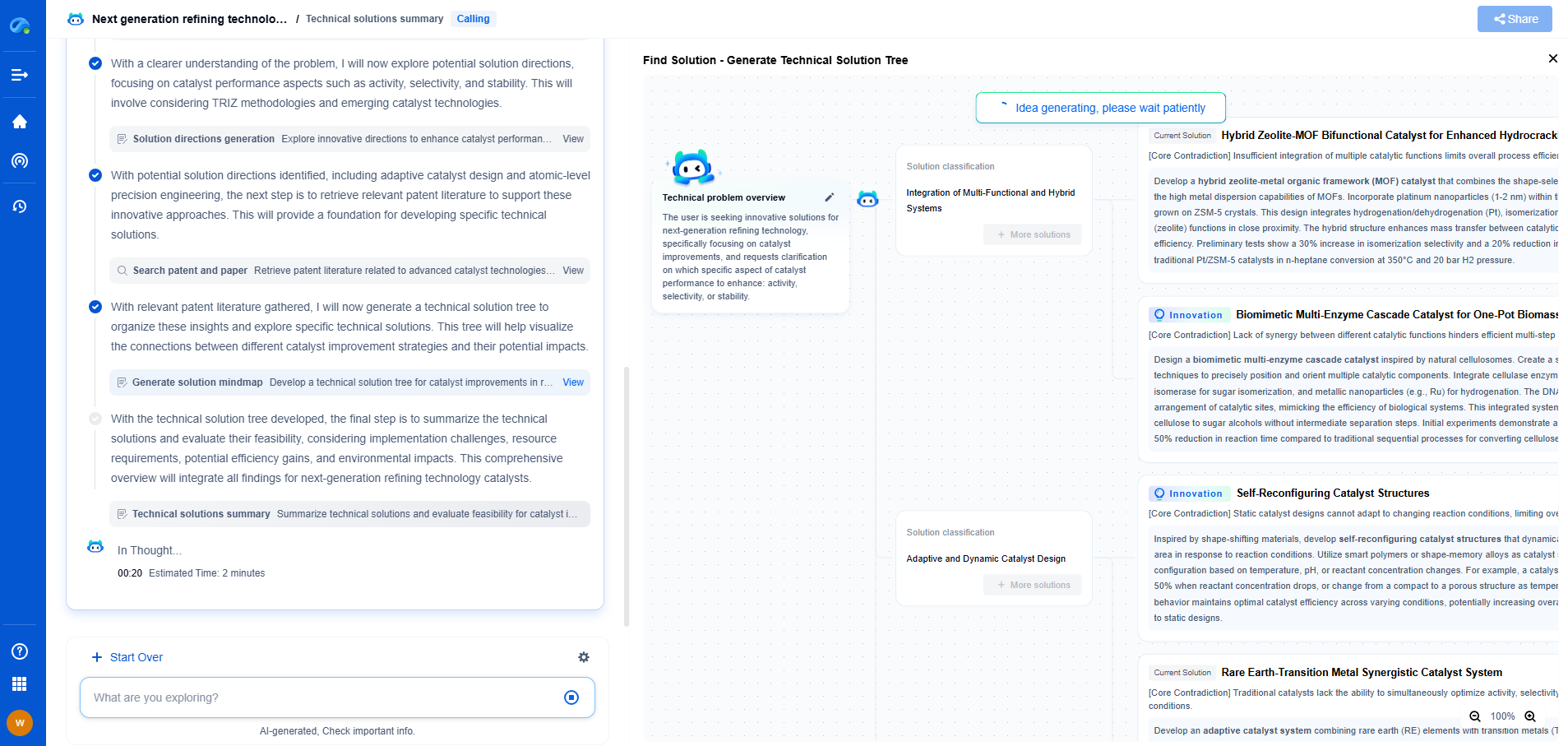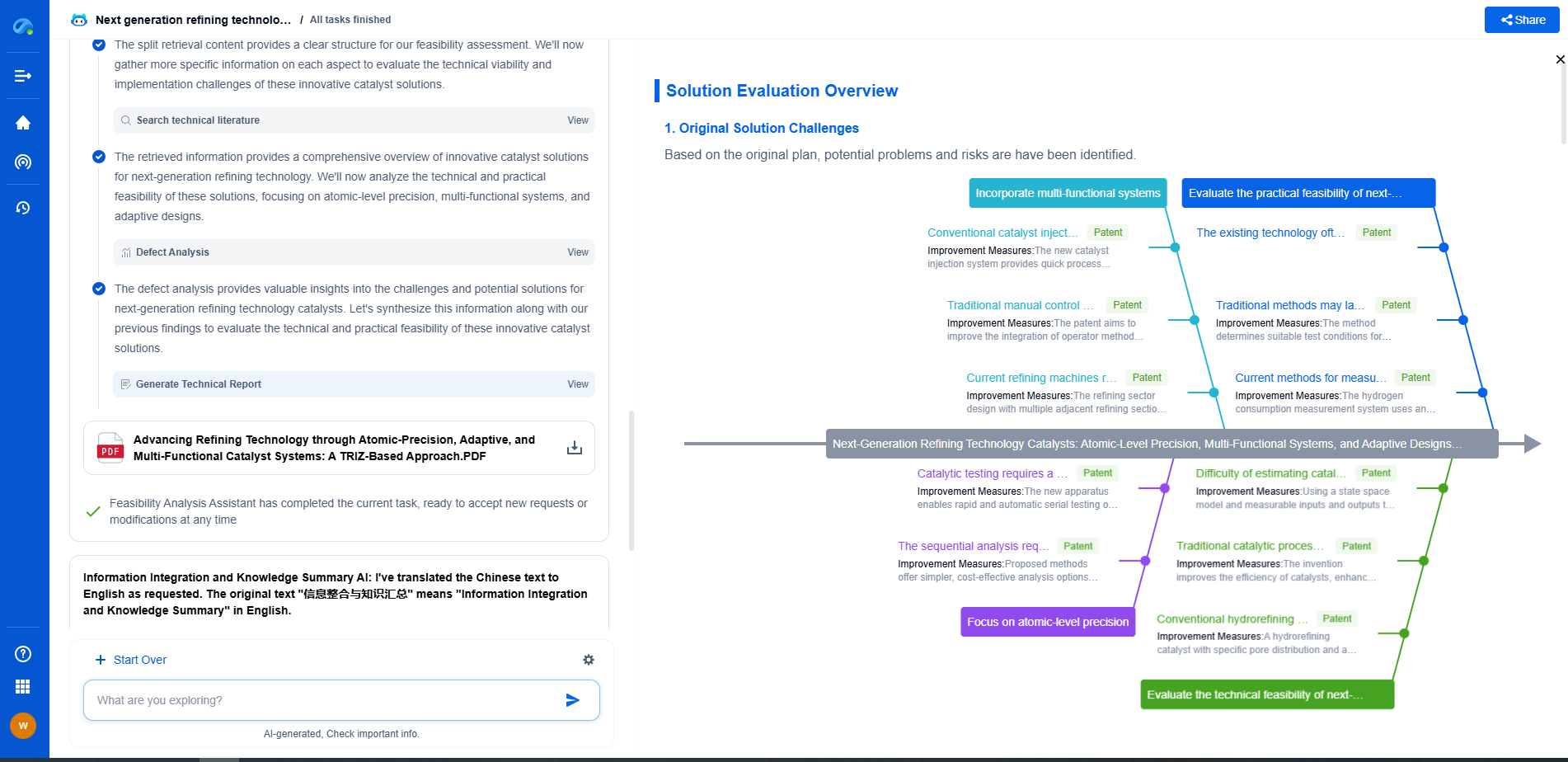DACs vs. PWM: Which is Better for Analog Output Control?
JUL 2, 2025 |
Analog output control is a crucial aspect in a myriad of applications, ranging from audio systems to industrial automation. Two popular technologies that facilitate this control are Digital-to-Analog Converters (DACs) and Pulse Width Modulation (PWM). While both serve the purpose of converting digital signals into analog ones, they do so in fundamentally different ways, each with its own advantages and drawbacks. Understanding these differences is key to selecting the appropriate technology for a given application.
Understanding Digital-to-Analog Converters (DACs)
DACs are devices that convert digital signals into continuous analog voltages. They work by using a method called weighted summing, where the digital input is converted into a proportional analog voltage. The resolution of a DAC, determined by its bit depth, plays a significant role in its performance. A higher bit depth equates to more precise analog output, providing finer gradations between voltages. DACs are often favored in applications where precision and linearity are crucial, such as in high-fidelity audio systems and instrumentation.
Exploring Pulse Width Modulation (PWM)
PWM, on the other hand, is a technique used to simulate an analog signal through time-based modulation. It involves varying the duty cycle of a digital waveform to control the power delivered to a load. Although PWM outputs a square wave, the average voltage over time can mimic an analog signal. PWM is extensively used in motor control, LED dimming, and similar applications where power efficiency and simplicity are more critical than precision.
Comparing Performance and Applications
When comparing DACs and PWM, one must consider the specific requirements of the application. DACs are generally superior in terms of precision and are suitable for applications that demand high resolution and linearity. They produce smooth, continuous signals and are ideal for audio processing and precise instrumentation.
PWM, conversely, is less costly and simpler to implement, making it a popular choice in applications where efficiency is prioritized over precision. PWM signals can be easily generated using microcontrollers, and their ability to control power makes them ideal for driving motors and LEDs. However, the inherent noise and ripple associated with PWM can be a concern for sensitive applications.
Evaluating Cost and Complexity
Cost and complexity are also important considerations when choosing between DACs and PWM. DAC systems tend to be more expensive due to their high precision components. They also require more complex design efforts, particularly for ensuring signal integrity and noise reduction.
PWM, by contrast, is generally more cost-effective and simpler to implement. Its reliance on digital circuitry allows for easy integration with microcontrollers, reducing system complexity. This makes PWM a favorable choice for budget-conscious projects that do not require the utmost precision.
Conclusion: Choosing the Right Tool for the Job
Ultimately, the choice between DACs and PWM depends on the specific needs of the application. If high precision and smooth analog output are paramount, DACs are likely the better choice. Conversely, for applications where cost, simplicity, and power efficiency are more critical, PWM may be the more suitable option. Understanding the strengths and limitations of each technology will help guide designers in making informed decisions, ensuring optimal performance and efficiency in their analog output control solutions.
Ready to Reinvent How You Work on Control Systems?
Designing, analyzing, and optimizing control systems involves complex decision-making, from selecting the right sensor configurations to ensuring robust fault tolerance and interoperability. If you’re spending countless hours digging through documentation, standards, patents, or simulation results — it's time for a smarter way to work.
Patsnap Eureka is your intelligent AI Agent, purpose-built for R&D and IP professionals in high-tech industries. Whether you're developing next-gen motion controllers, debugging signal integrity issues, or navigating complex regulatory and patent landscapes in industrial automation, Eureka helps you cut through technical noise and surface the insights that matter—faster.
👉 Experience Patsnap Eureka today — Power up your Control Systems innovation with AI intelligence built for engineers and IP minds.
- R&D
- Intellectual Property
- Life Sciences
- Materials
- Tech Scout
- Unparalleled Data Quality
- Higher Quality Content
- 60% Fewer Hallucinations
Browse by: Latest US Patents, China's latest patents, Technical Efficacy Thesaurus, Application Domain, Technology Topic, Popular Technical Reports.
© 2025 PatSnap. All rights reserved.Legal|Privacy policy|Modern Slavery Act Transparency Statement|Sitemap|About US| Contact US: help@patsnap.com

